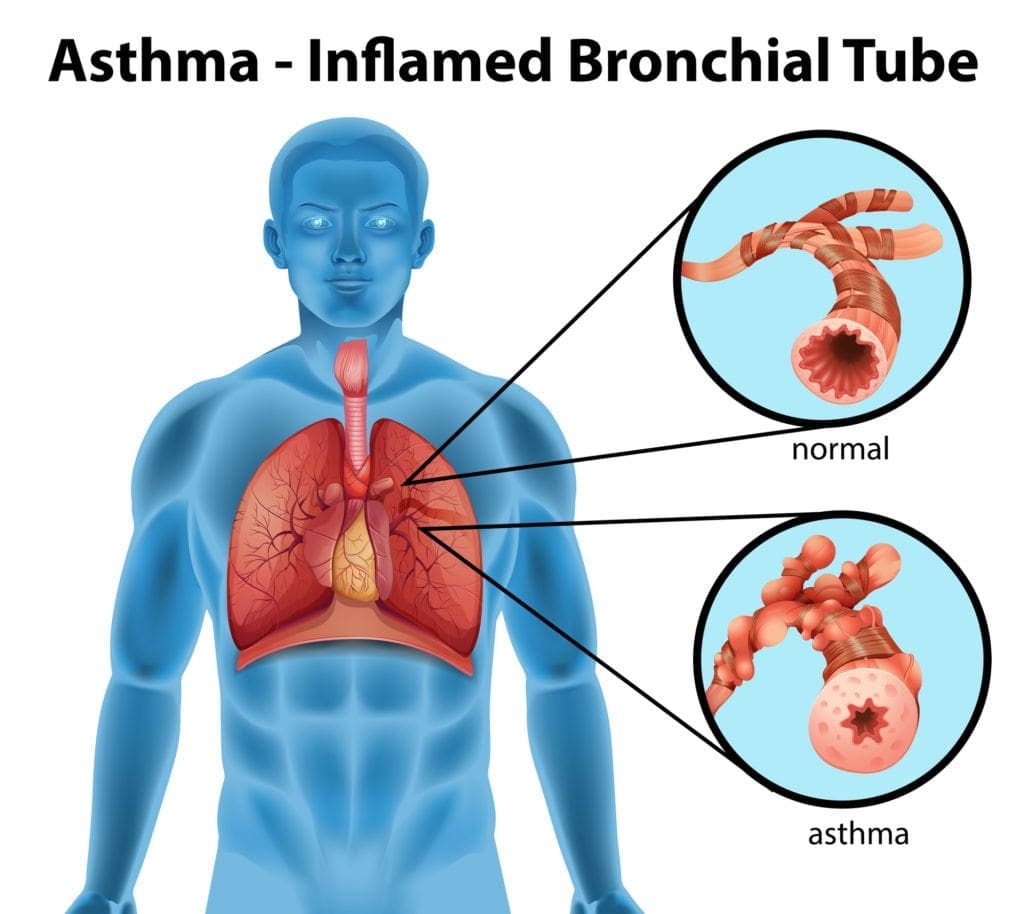
The temperature was 36.8 ☌, the pulse was 90 beats per minute and regular, the blood pressure was 120/73 mmHg and the respiratory rate was 20 breaths per minute. No relevant family history was identified and no one in his family had similar symptoms. He had one son and one daughter, both of whom were healthy. He got married at 25 and got along with his wife well. He had smoked for 10 years, which was about 5 pack years, and ceased smoking 10 years ago. He was not exposed to an epidemic area before admission. He had no known allergies, but he had been suffering from cataract for about 1 year, gallbladder polyps and fatty liver for about 4 years. Since the onset of the disease, his appetite stayed the same with normal stool and urine. So he was referred to our hospital for further treatment. He received intravenous treatment with unknown regimen in a local hospital for a couple of days, but his condition was not improved. He began to wheeze after mild activity and coughed with increasing white phlegm. The patient was re-admitted on May 25, 2015, 6 months before which, his symptoms recurred and were worse in cold weather. Pulmonary function test (performed on Dec 25th, 2012 and May 26th, 2015, respectively). He continued to take Singulair, Ketotifen and Theophylline, as well as Symbicort 320/9 µg bid and Foster 100/6 µg bid. After that, his condition improved and he was subsequently discharged. The treatment included Methylprednisolone at a daily dose of 40 mg intravenously and oral Theophylline 0.2 g once every 12 hours for 3 days. Upon referral, he was admitted to our hospital for further treatment. After receiving symptomatic treatment, the patient’s condition improved but did not normalize. Inflammation was observed in both bronchial trees on bronchoscopy. No abnormalities were noted in echocardiogram. The bronchodilator reversibility test was positive: FEV 1 increased >12% and >200 mL with inhaled Ventolin 400 µg ( Figure 1). Pulmonary function test suggested mild obstructive ventilatory dysfunction with FEV 1 at 72.2% of predicted, FVC at 89.7% of predicted, and FEV 1/FVC ratio at 66.81%. Chest CT scan showed interstitial inflammation in the right middle and left upper lobe. One month after the treatment, he suffered from an attack of wheezing during moderate activity and was admitted to a local hospital, in which he was diagnosed with ‘bronchial asthma’ and ‘type 2 respiratory failure’, from 1st December to 13th December 2012. His condition improved, but he still had occasional relapses. He was diagnosed with ‘upper respiratory infection’ in a local hospital and received symptomatic treatment for several days that he could not recall clearly. He had no chills, fever, chest pain, chest tightness, palpitations, night sweats, hemoptysis or paroxysmal nocturnal dyspnea. The cough was worse upon waking in the morning and laying down at night. The patient began to cough with white phlegm after a cold in 2012. April 2, 2017.A 43-year-old man was admitted to the Guangzhou Institute of Respiratory Disease (GIRD), the First Affiliated Hospital of Guangzhou Medical University because of recurrent episodes of coughing, expectoration and wheezing for 3 years with aggravation during the previous 6 months. The common cold in children: Management and prevention. Rochester, Minn.: Mayo Foundation for Medical Education and Research 2016. Primary Care: Clinics in Office Practice. Pediatric asthma for the primary care practitioner. American College of Emergency Physicians. Acute respiratory distress in children: Emergency evaluation and initial stabilization. In: Principles and Practice of Sleep Medicine. Overlap syndromes of sleep and breathing disorders.

Evaluation of wheezing illnesses other than asthma in adults. Vocal cord dysfunction (a condition that affects vocal cord movement).Respiratory tract infection (especially in children younger than 2).


Pneumonia - an infection in one or both lungs.Obstructive sleep apnea (a condition in which breathing stops and starts during sleep).Epiglottitis (swelling of the "lid" of your windpipe).COPD (chronic obstructive pulmonary disease) - the blanket term for a group of diseases that block airflow from the lungs - including emphysema.Bronchiolitis (especially in young children).Bronchiectasis (a chronic lung condition in which abnormal widening of bronchial tubes inhibits mucus clearing).Asthma - a long-term condition that affects airways in the lungs.Anaphylaxis (a severe allergic reaction, such as to an insect bite or medication).Common causes include infection, an allergic reaction or a physical obstruction, such as a tumor or a foreign object that's been inhaled.Īll of the following conditions can lead to wheezing: However, any inflammation in your throat or larger airways can cause wheezing.


 0 kommentar(er)
0 kommentar(er)
